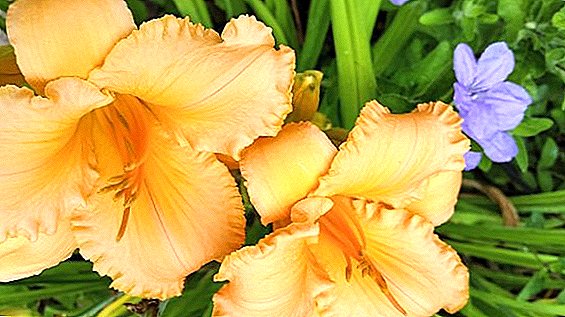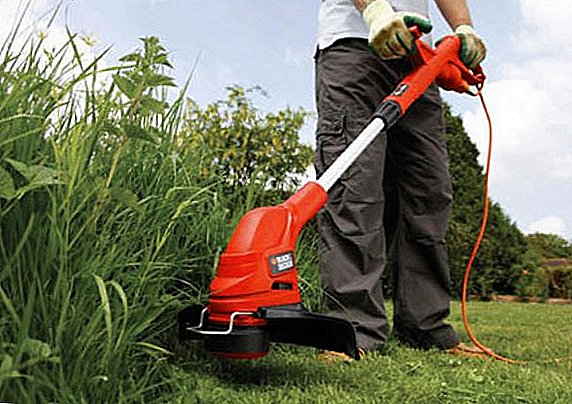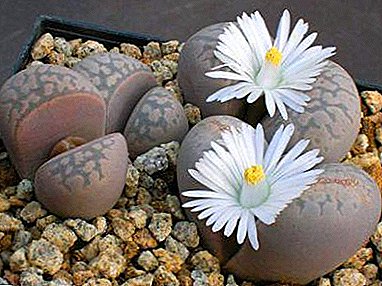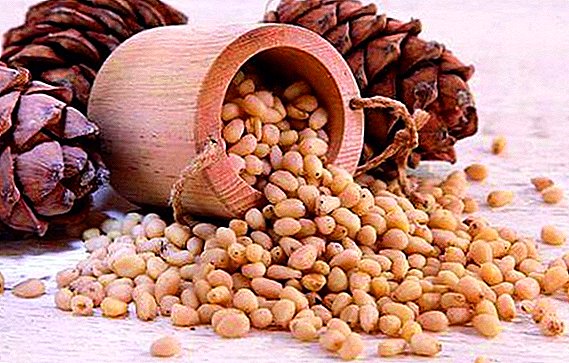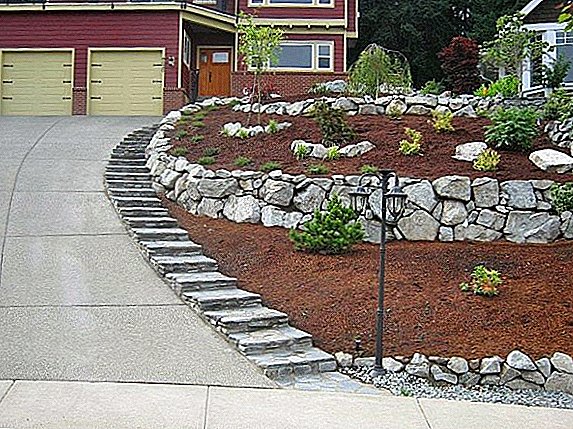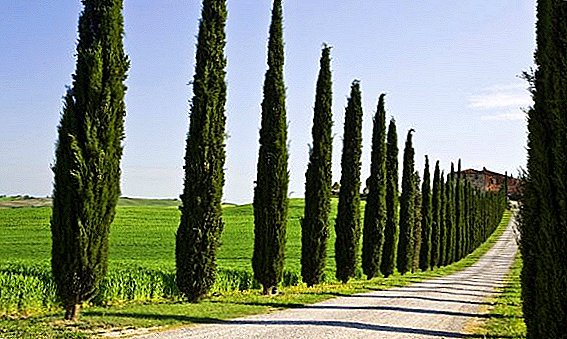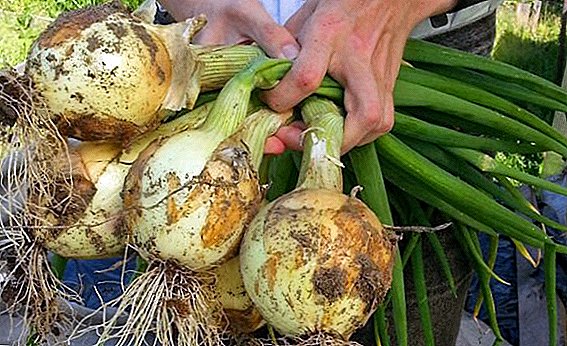 No garden can do without onions. The variety of exhibition is one of the most popular. Bred it in Holland. Appreciate it for its excellent taste, yield and large size. The article focuses on the Exibishen onion and on growing it from seed in a seedless way.
No garden can do without onions. The variety of exhibition is one of the most popular. Bred it in Holland. Appreciate it for its excellent taste, yield and large size. The article focuses on the Exibishen onion and on growing it from seed in a seedless way.
Description and characteristics
The bulbs of this variety are very large, can reach sizes from 120 to 400 g. The exhibition attribute refers to the capricious varieties of onions, but with proper farming techniques, up to 3 kg can be collected from one square meter. The taste of this vegetable is sweet, does not have a bitter taste. When shredding it does not cause tears due to the fact that it has a low content of essential oils. The only disadvantage of this variety is that it is not stored for long. All winter he can not lie, the maximum - until December.
The taste of this vegetable is sweet, does not have a bitter taste. When shredding it does not cause tears due to the fact that it has a low content of essential oils. The only disadvantage of this variety is that it is not stored for long. All winter he can not lie, the maximum - until December.
Did you know? Some types of onions are ornamental plants. One of these is a variety with yellow flowers Mole.
Do I need to experiment: what the experts say
Onion Exhibition can be grown without seedlings, sowing seeds directly into the ground. This method is used by large manufacturers who have large areas. Experts recommend our summer residents to use the old method - through sevok. BUT specifically, this variety is best grown through seedlings. In this way, you can get an early harvest and large onions, the mass of which can reach 700 g. If you use direct sowing, then the average mass of the bulb will be no more than 250 g 
How to prepare for landing
To begin with, seeds are checked for germination. About a month before sowing, 15 pieces are selected, wrapped in cloth and soaked in warm water. Leave for five days, constantly moisturizing. After that, their germination rate is evaluated. Seed material must be decontaminated using a solution of potassium permanganate within 15 minutes. To get quick and friendly shoots, the seeds must be prepared. They are very small, so it is difficult to work with them. Experienced gardeners cut toilet paper into three pieces lengthwise and glue the seeds to it. Liquid paste is made from potato starch, which is mixed with the AVA complex fertilizer.
Using a syringe, glue is applied to the paper at a distance of about 5 cm. Using tweezers, seeds are introduced into the paste. After the tape has dried, it must be carefully folded and placed in a plastic bag. Thanks to this procedure, it is possible to obtain seedlings without thinning.
Did you know? Onions got this name due to the fact that in appearance it looks like a turnip.
The best time to plant
The planting onion of Exhibichen by seeds in the ground is made in April. This variety of onions prefers airy land in which the acidity is neutral. To do this, at the rate of 50 g per 1 square meter, wood ash is introduced and loosened well. Next, you need to treat the soil with an antifungal agent, such as Fitosporin.  The grooves need to be made about 2 cm deep and lay paper strips upwards in them. Gently sprinkle with earth and water well. The bed should preferably be covered with a special material or film to protect the crops from possible frost.
The grooves need to be made about 2 cm deep and lay paper strips upwards in them. Gently sprinkle with earth and water well. The bed should preferably be covered with a special material or film to protect the crops from possible frost.
Existential Care
The exhibition is a variety of onions, which requires not only careful planting, but also proper care.
Watering
Watering should be done as the soil dries out, but not allowing it to dry out completely.
Important! At the end of July, watering should stop so that the bulbs are not watery. This adversely affects the shelf life of the culture.

Soil care
The soil is necessarily loosened after each watering. And also it is necessary to pull out weeds. To maintain moisture in the soil it is recommended to mulch it. Hay or sawdust works well for this.
Top dressing
14 days after planting the crop, it is necessary to fertilize the soil using mullein. Or you can make complex fertilizers, which include potassium, nitrogen and phosphorus. This procedure must be done at least three times during the cultivation of the culture.
Familiarize yourself with the agrotechnics of growing other types of onions: shallot, batun, slizuna, shnitta, leek.
How to protect onions from diseases and pests
The most common disease of this variety is rotting of Donets. It is observed during the ripening of the vegetable. Its roots are rotting, onions die off very quickly. If this disease has already appeared, the affected plants need only be removed.  Onions can also be damaged by smut - translucent dark gray stripes appear on the leaves. These diseases can be avoided by keeping the crop rotation and watering the crops properly. Pests of onions include ticks, thrips, onion moth and fly, as well as nematode.
Onions can also be damaged by smut - translucent dark gray stripes appear on the leaves. These diseases can be avoided by keeping the crop rotation and watering the crops properly. Pests of onions include ticks, thrips, onion moth and fly, as well as nematode.
Important! To protect the crop from onion flies, you need to plant carrots next to it. Its fragrance will scare off the pest.To prevent the occurrence of pests, it is necessary to properly prepare the planting material and the soil. If they have already appeared, then you can get rid of with the help of biological products, such as Agrovertin, Fitoverm.
With the proper sowing of seeds and care for the variety Exichen, in 60-80 days it will be possible to harvest and enjoy onions.


